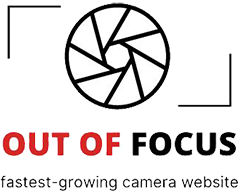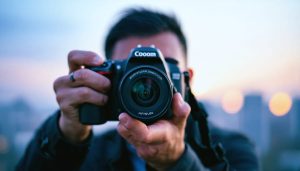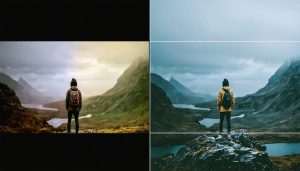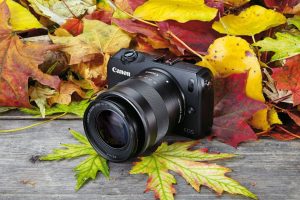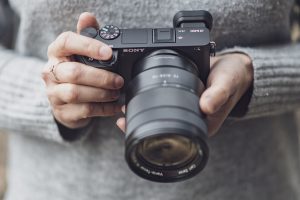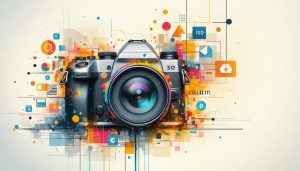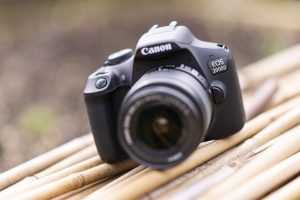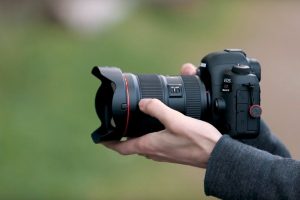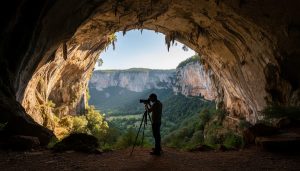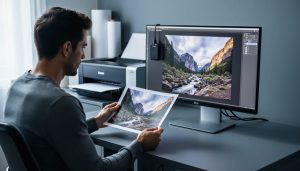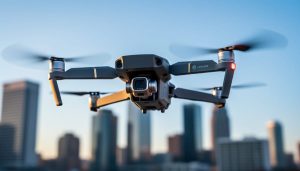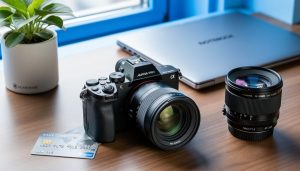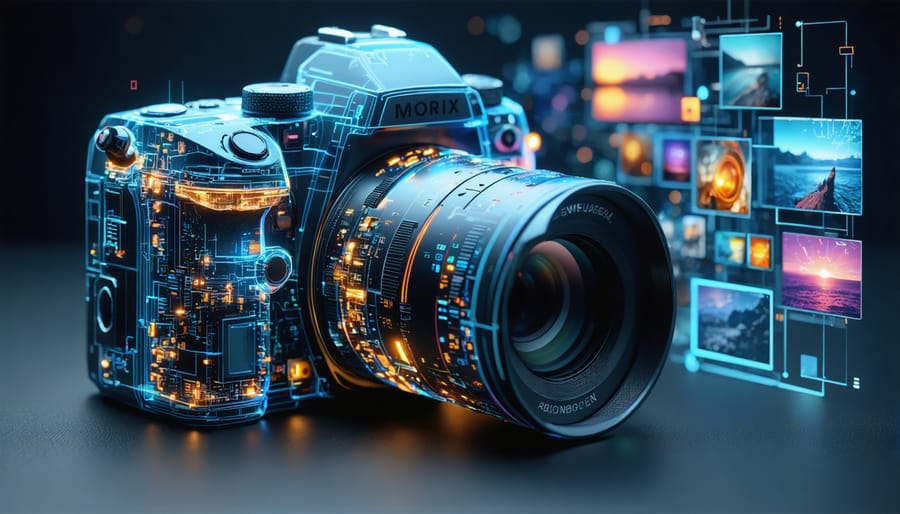
Artificial intelligence is revolutionizing photography, transforming the way we capture, edit, and enhance images with unprecedented precision and creative possibilities. From automated subject detection to sophisticated sky replacement and portrait retouching, AI-powered tools are becoming indispensable allies in modern photography workflows. Yet beneath the buzz lies a profound shift in how photographers approach their craft – balancing artistic vision with algorithmic assistance.
Today’s AI photography tools offer more than just automated shortcuts; they’re reshaping the fundamentals of post-processing while opening new creative horizons. Whether you’re a seasoned professional looking to streamline your workflow or an enthusiast eager to elevate your images, understanding how to harness AI’s capabilities while maintaining creative control is crucial in today’s rapidly evolving photography landscape.
This evolution brings both exciting opportunities and important considerations. While AI can dramatically reduce editing time and achieve results that once required hours of manual work, it also raises questions about authenticity, artistic integrity, and the role of human creativity in an increasingly automated world. The key lies in viewing AI not as a replacement for photographic skill, but as a sophisticated tool that enhances our creative vision while respecting the core principles of photography.
In this guide, we’ll explore the practical applications of AI in photography, from cutting-edge editing software to innovative capture techniques, helping you navigate this technological frontier while maintaining your unique artistic voice.
How AI is Changing Photo Editing Forever
Traditional vs. AI-Powered Editing
In the realm of photo editing, traditional post-processing techniques often require meticulous attention to detail and considerable time investment. Photographers typically spend hours manually adjusting exposure, color balance, and removing unwanted elements from their images. While this hands-on approach offers precise control, it can be time-consuming and demanding.
AI-powered editing tools have revolutionized this workflow by automating many common tasks. For instance, where you might have spent 20 minutes carefully masking a subject, AI can now accomplish this in seconds with remarkable accuracy. Smart enhancement features can analyze your image and suggest optimal adjustments for contrast, color, and sharpness, serving as a knowledgeable assistant rather than replacing your creative vision.
However, the key difference lies in the learning curve and creative flexibility. Traditional editing requires deep understanding of tools and techniques, while AI-assisted workflows can help photographers achieve professional-looking results more quickly. The best approach often combines both methods – using AI to handle routine tasks while maintaining manual control over creative decisions that define your unique style.
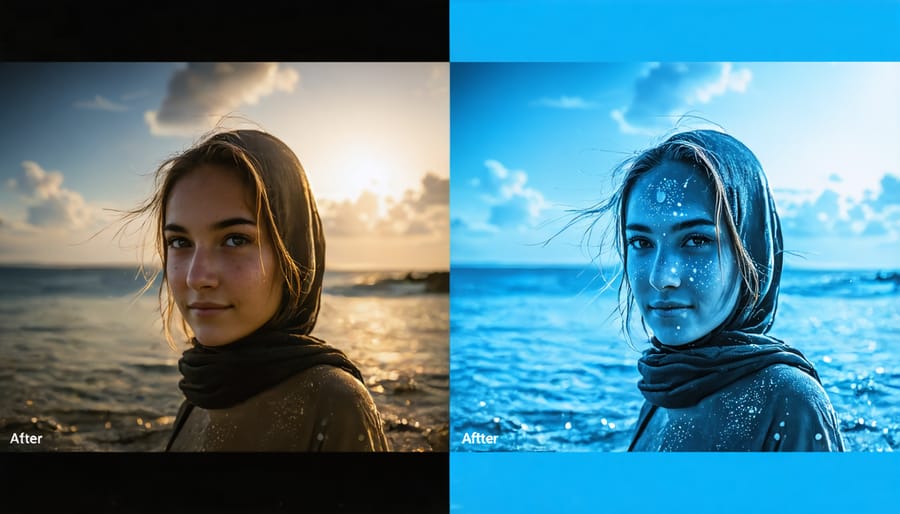
Time-Saving Benefits for Photographers
AI-powered tools are revolutionizing the way photographers handle post-processing, turning hours of tedious work into minutes of automated efficiency. Take batch editing, for instance – what once required individual attention to hundreds of wedding photos can now be accomplished in a fraction of the time, with AI analyzing and applying consistent adjustments across entire collections while maintaining each image’s unique characteristics.
Portrait photographers are finding particular value in AI-driven skin retouching and portrait enhancement tools. These smart algorithms can detect and naturally smooth imperfections, adjust lighting on faces, and even enhance eye clarity – all while preserving the subject’s authentic appearance. What previously took 15-20 minutes per portrait can now be achieved in mere seconds.
For landscape photographers, AI sky replacement and enhancement features have become game-changers. Instead of spending hours masking complex treelines or architectural elements, AI can instantly identify the sky and seamlessly blend in replacements, maintaining natural lighting and reflections throughout the scene.
Perhaps most impressively, AI noise reduction and sharpening tools are delivering results that surpass traditional methods, rescuing previously unusable high-ISO images and reducing time spent on manual pixel-level corrections.
Essential AI Photo Editing Tools
Automated Portrait Enhancement
Artificial intelligence has revolutionized the way we approach portrait enhancement, offering photographers powerful tools that streamline traditionally time-consuming portrait retouching techniques. Modern AI-powered software can instantly detect facial features, analyze skin texture, and apply intelligent corrections that look natural and professional.
These smart tools excel at common portrait enhancements like skin smoothing, where they can reduce blemishes and uneven texture while preserving important details like pores and natural skin variation. Unlike traditional blanket filters, AI algorithms understand facial anatomy and can selectively apply adjustments that maintain your subject’s authentic appearance.
Facial recognition capabilities have become increasingly sophisticated, allowing for precise adjustments to specific facial features. Whether it’s subtly enhancing eye brightness, adjusting lip color, or refining facial contours, AI tools can make these changes while respecting natural facial proportions and maintaining a realistic look.
What’s particularly impressive is how these AI solutions can adapt to different skin tones, ages, and lighting conditions. They’ve been trained on diverse datasets, ensuring consistent results across various subjects. For photographers, this means spending less time on repetitive editing tasks and more time focusing on creative decisions that truly impact their artistic vision.
However, it’s important to maintain a balanced approach. While AI can dramatically speed up your workflow, the best results often come from combining automated enhancements with thoughtful manual adjustments, ensuring your portraits retain their unique character and emotional impact.
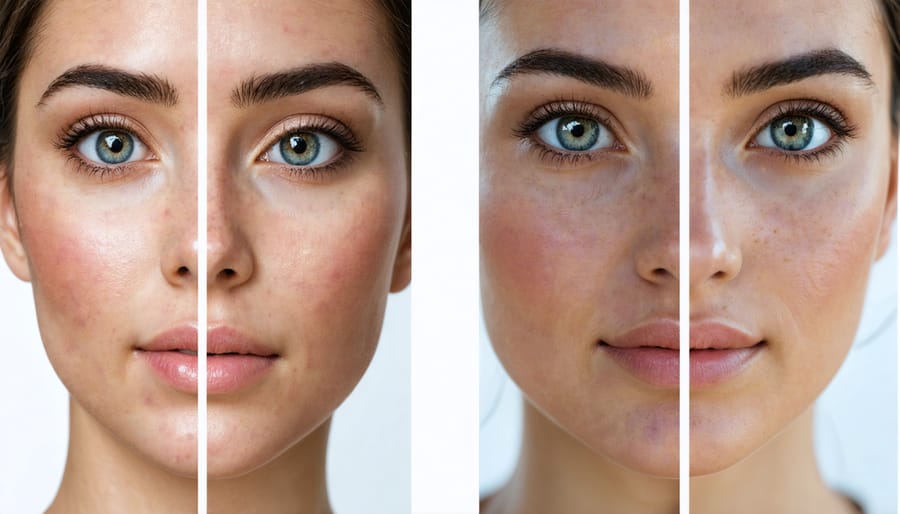
Smart Background Manipulation
Background manipulation has undergone a revolutionary transformation with AI-powered tools, making complex editing tasks accessible to photographers of all skill levels. Modern AI algorithms can now detect and separate subjects from their backgrounds with remarkable precision, eliminating the tedious process of manual masking and selection.
Apps like Remove.bg and Photoshop’s Quick Select tool use sophisticated neural networks to instantly identify and isolate subjects, while more advanced solutions like Luminar Neo can not only remove backgrounds but also intelligently replace them with new scenes that match the original image’s lighting and perspective.
What makes these AI tools particularly impressive is their ability to handle challenging elements like flying hair, semi-transparent objects, and complex edges that traditionally required extensive manual retouching. For instance, wedding photographers can now quickly swap out distracting backgrounds in group shots, while product photographers can create consistent white backgrounds for e-commerce images in seconds.
The technology also excels at background enhancement, automatically fixing issues like noise, poor lighting, or unwanted objects while preserving the natural look of the scene. Some AI tools can even generate entirely new backgrounds based on text descriptions, opening up creative possibilities that were previously impossible or time-consuming to achieve.
However, it’s important to maintain creative control and use these tools judiciously. While AI can handle the heavy lifting, your artistic vision should guide the final result.
Intelligent Color Grading
Intelligent color grading represents one of the most transformative applications of AI in photography post-processing. Modern AI-powered tools can analyze your images’ color composition and suggest adjustments that enhance mood, balance, and visual impact. These systems learn from millions of professionally edited photos, enabling them to understand and replicate complex color grading for emotional impact.
Popular software like Luminar Neo and Capture One now incorporate AI-driven color engines that can instantly match your photos to specific cinematic styles or seasonal palettes. For instance, you can transform a regular sunset shot into a moody, teal-and-orange masterpiece with just a few clicks, while maintaining natural skin tones and critical detail.
What makes these tools particularly valuable is their ability to understand context. The AI can distinguish between different elements in your photo—sky, vegetation, skin, architecture—and apply appropriate color adjustments to each. This selective approach ensures that your autumn forest doesn’t turn orange-brown when you’re aiming for a cool, misty morning look.
For photographers who value efficiency without sacrificing creative control, these AI tools offer customizable presets and the ability to fine-tune suggestions. You can start with an AI-generated color grade and adjust it to match your artistic vision, saving hours of manual color wheel adjustments while maintaining your signature style.
Real-World Applications and Techniques
Wedding Photography Workflow
Wedding photographers face the daunting task of processing hundreds, if not thousands, of images from a single event. AI-powered batch processing has revolutionized this workflow, turning what was once a week-long endeavor into a matter of hours.
Modern AI solutions can automatically sort and flag the best shots based on factors like facial expressions, composition, and technical quality. This initial culling process helps photographers quickly identify prime candidates for editing, significantly reducing selection time.
AI batch processing excels at handling routine adjustments across entire collections. It can automatically correct exposure, enhance skin tones, and adjust white balance while maintaining consistency across all images. For instance, if the lighting changed between the ceremony and reception, AI can analyze and apply appropriate corrections to maintain a cohesive look throughout the album.
Portrait enhancement has become particularly sophisticated, with AI tools capable of subtle improvements to skin texture, eye brightness, and facial features across multiple shots. These tools are smart enough to preserve unique characteristics while removing temporary blemishes or distracting elements.
Perhaps most impressively, AI can now recognize specific wedding moments and apply predetermined style presets. Whether it’s the first dance, ring exchange, or group photos, the software can categorize and process these moments appropriately, maintaining the photographer’s artistic vision while saving countless hours of manual editing.
For the finishing touches, AI assists in creating consistent color grading and style application across the entire wedding collection, ensuring a polished, professional result that delights both photographer and client.
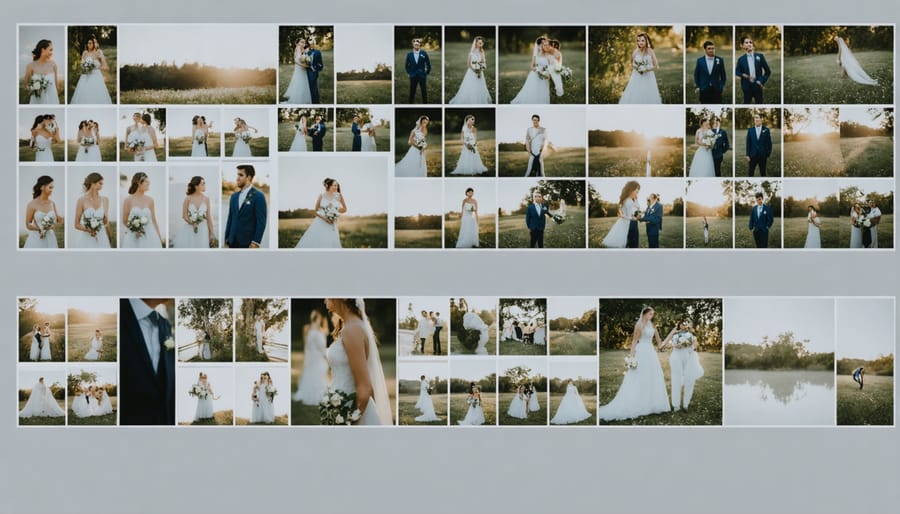
Landscape Photography Enhancement
Landscape photography has undergone a remarkable transformation with AI-powered tools that can dramatically enhance natural scenes. One of the most impressive capabilities is sky replacement, which allows photographers to swap dull, overcast skies with vibrant alternatives while maintaining natural-looking lighting and reflections across the entire image.
Modern AI algorithms analyze the existing scene, detecting horizon lines, buildings, and trees, then seamlessly blend new skies while adjusting colors and lighting to maintain realism. This technology is particularly valuable when shooting in challenging conditions where waiting for perfect weather isn’t possible.
Dynamic range optimization has also evolved beyond traditional HDR techniques. AI now intelligently balances exposure across different parts of an image, recovering detail in both shadows and highlights without creating the artificial look often associated with conventional HDR processing. The software can identify specific elements like mountains, water bodies, and foreground elements, applying selective adjustments that preserve the natural feel of the scene.
What’s particularly impressive is how these AI tools can maintain the authenticity of your original vision while enhancing technical aspects. For instance, when working with sunset photos, AI can enhance the golden hour glow while preserving the subtle color transitions and maintaining realistic shadow details. This balance between enhancement and authenticity helps create images that are both impactful and credible.
Remember that while AI provides powerful enhancement capabilities, it’s essential to use these tools thoughtfully to maintain your unique photographic style and artistic vision.
Commercial Photography Solutions
Artificial intelligence is revolutionizing commercial photography, offering innovative solutions that streamline operations while maintaining professional quality. For e-commerce businesses and commercial photographers, AI-powered tools are transforming traditional product photography workflow approaches.
One of the most significant advantages is automated background removal and replacement. AI can now instantly separate products from their backgrounds with remarkable precision, eliminating hours of manual masking work. These tools can even generate realistic shadows and reflections, ensuring products look natural in their new environments.
Color correction and consistency have also been revolutionized by AI. Smart algorithms can automatically adjust white balance and color accuracy across entire product catalogs, ensuring brand consistency across thousands of images. This is particularly valuable for large-scale e-commerce operations where maintaining visual consistency is crucial.
AI-powered composition tools are helping photographers achieve perfect product placement and framing. These systems can analyze thousands of successful commercial images to suggest optimal arrangements and even automatically crop images to various aspect ratios while keeping the product perfectly centered and composed.
Perhaps most impressively, some AI systems can now generate photorealistic product variations, allowing businesses to showcase different color options or features without the need for additional photo shoots. This capability significantly reduces production costs and time-to-market for new product variations.
Maintaining Creative Control
Fine-Tuning AI Results
While AI can produce impressive results out of the box, learning to fine-tune these outputs is essential for achieving your creative vision. Think of AI as your skilled assistant rather than the final decision-maker. Start by adjusting basic parameters like intensity sliders, which control how strongly the AI effect is applied. Most AI photo editors allow you to dial the effect up or down, helping you find the sweet spot between subtle enhancement and over-processing.
Pay attention to masks and selective editing options. Many AI tools now offer sophisticated masking capabilities, letting you apply effects to specific areas while protecting others. For instance, when using AI skin smoothing, you might want to preserve skin texture around the eyes and lips while softening other areas.
Color adjustments often benefit from manual tweaking after AI processing. While AI can make intelligent color corrections, your artistic judgment matters. Consider adjusting saturation, temperature, and tint to match your style after the AI has done its initial work.
For portrait retouching, focus on maintaining natural-looking results. AI can sometimes over-smooth skin or alter facial features too dramatically. Use the tool’s refinement options to bring back some texture and authenticity. Look for settings that control detail preservation and structure strength.
When working with landscape enhancements, pay special attention to sky replacements and atmospheric effects. Most AI tools allow you to adjust lighting direction, atmospheric haze, and cloud density. Take time to match these elements with the existing lighting conditions in your original image for the most realistic results.
Remember to save your preferred settings as presets when possible. This helps maintain consistency across your work while saving time on future edits.
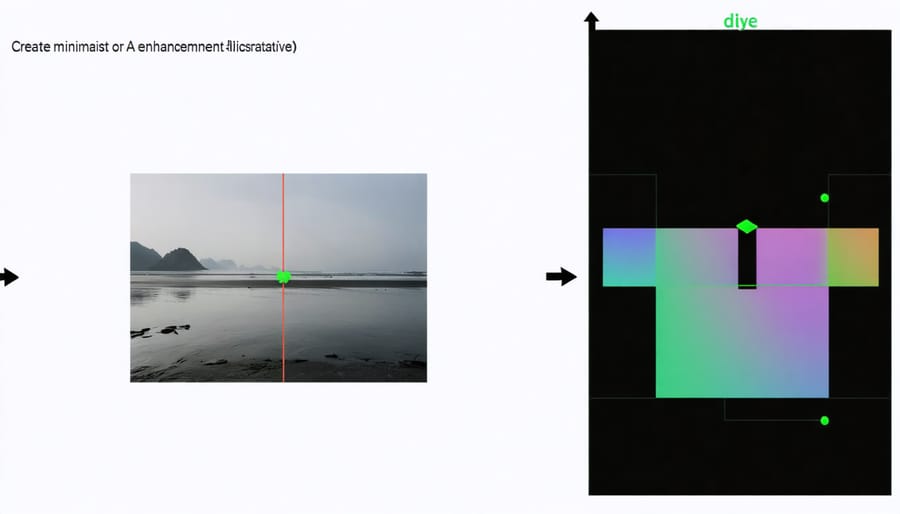
Developing Your Personal Style
While AI tools offer powerful capabilities, maintaining your unique photographic voice is essential. The key lies in viewing AI as an enhancement to your creative process rather than a replacement for it. Start by defining your signature style – whether it’s moody landscapes, vibrant street photography, or minimalist portraits – and then selectively incorporate AI tools that amplify these artistic choices.
Consider using AI as a starting point rather than an endpoint. For example, if you’re known for dramatic black and white conversions, use AI to handle the initial conversion but fine-tune the contrast and tonality manually to achieve your signature look. This approach can create an efficient editing workflow while preserving your artistic vision.
Experiment with different AI tools and presets, but always ask yourself if the results align with your intended aesthetic. Don’t feel pressured to use every AI feature available – sometimes less is more. Keep a before-and-after collection of your edits to ensure your style remains consistent across your portfolio.
Remember that your unique perspective comes from your experiences, creative decisions, and technical choices. AI should complement these elements, not overshadow them. Try developing custom presets based on your AI-enhanced edits, which can help maintain consistency while saving time. This way, you’re leveraging AI’s capabilities while ensuring your photographs remain distinctly yours.
The goal is to find the sweet spot where technology enhances your creativity without compromising your artistic integrity. As you become more comfortable with AI tools, you’ll naturally discover which features best serve your vision and which ones to skip.
As we’ve explored throughout this article, artificial intelligence has revolutionized photography in ways that were unimaginable just a few years ago. From automated subject detection to sophisticated image enhancement and creative style transfer, AI tools have become invaluable allies for photographers at every skill level.
The key takeaway is that AI in photography isn’t about replacing human creativity – it’s about enhancing it. These tools are freeing photographers from tedious technical tasks, allowing more time for creative expression and artistic vision. Whether it’s streamlining workflow, improving image quality, or exploring new creative possibilities, AI has proven to be a game-changing technology in the photographic process.
Looking ahead, we can expect AI photography tools to become even more sophisticated and accessible. Emerging technologies like neural rendering and advanced computational photography suggest a future where the line between capture and post-processing becomes increasingly blurred. We’re likely to see more intelligent cameras that can understand complex scenes and make real-time adjustments, as well as more powerful editing tools that can perform complex manipulations with minimal input.
However, it’s crucial to remember that AI should complement, not replace, photographic skill and artistic vision. The most successful photographers will be those who learn to balance automated capabilities with their creative instincts, using AI as one tool in their broader artistic toolkit.
As AI continues to evolve, staying informed about new developments and maintaining a thoughtful approach to implementation will be key. The future of photography lies not in choosing between human creativity and artificial intelligence, but in finding the sweet spot where both work together to create compelling visual stories.
